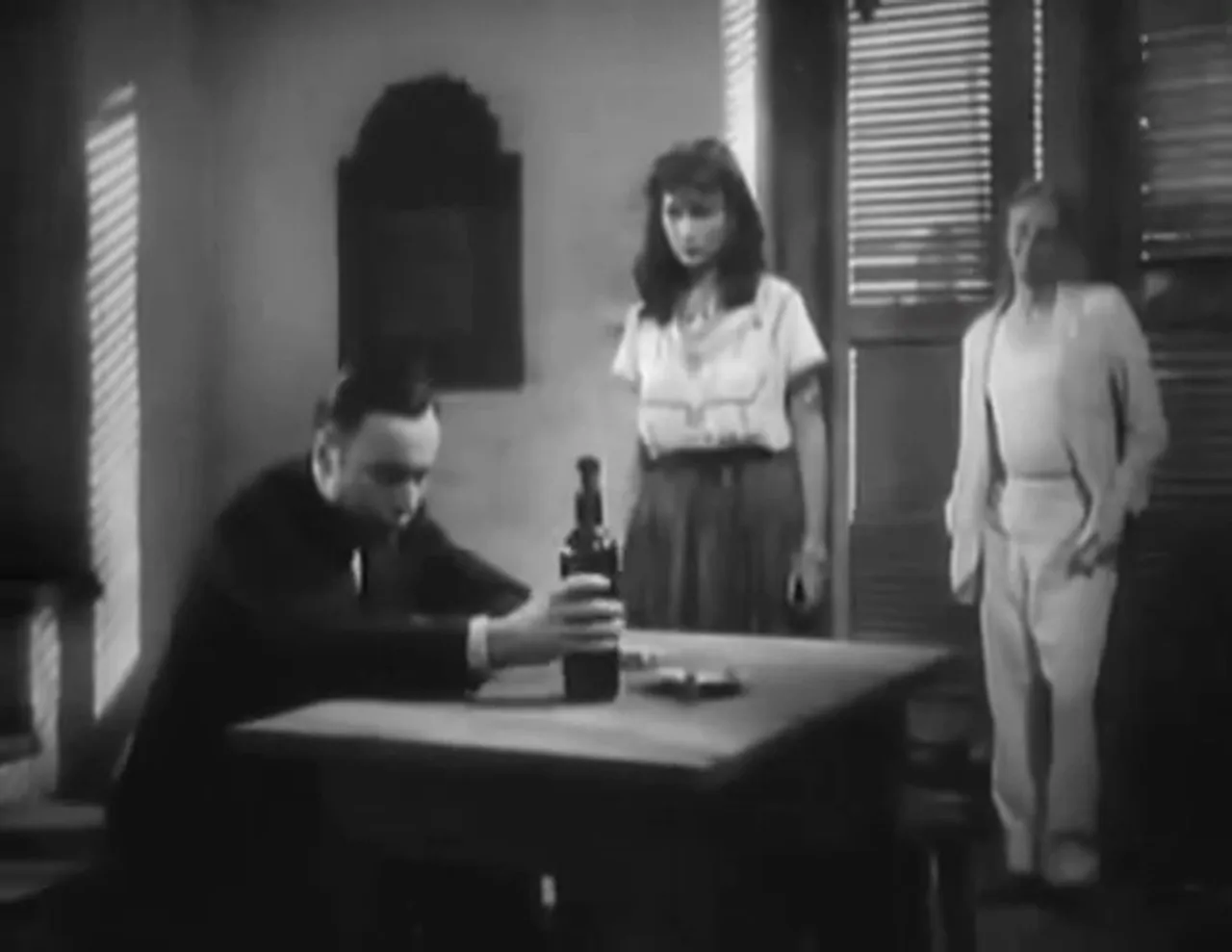Algiers — directed by John Cromwell and presented on screen in this video compilation — is both an emblematic crime drama and a historical touchstone for later Hollywood works. This article draws on the film’s original material and the scenes presented in the video to unpack the film’s plot, performances, production history, and long-term legacy. It also considers how Algiers resonated with the sensibilities that would later be associated with the film noir movie tradition, while remaining faithful to the documented facts drawn from the film and its contemporary records.
Throughout this long-form critique, the critic will reference lines, moments, and images from the film as presented, bringing to life the Casbah’s atmosphere, the fatalism of the protagonist, and the cultural ripples Algiers created. The article is written from a third-person critic’s perspective, respecting the film’s historical record and the film’s known production context.
Outline
- Introduction and historical context
- The Casbah as setting and symbol
- Plot overview and pivotal scenes
- Character studies: Pepe, Gaby, Slimane, and the supporting ensemble
- Production, casting choices, and censorship
- Style, themes, and a case for noir-adjacent influence
- Reception, awards, and legacy
- Close readings of key scenes with screenshots
- Conclusion and final assessment
Introduction and Historical Context
Algiers, a 1938 crime drama directed by John Cromwell and produced by Walter Wanger, is a remake of the celebrated French film Pépé le Moko, itself adapted from the novel by Henri La Barthe. The American version starred Charles Boyer as Pepe le Moko, Sigrid Gurie as Ines, and Hedy Lamarr in her Hollywood debut as Gaby. It is a film that, while not catalogued formally as a film noir movie in contemporary histories, undeniably fed the dark veins of romantic fatalism and urban entrapment that the film noir movie idiom would later explore.
From its inception, the production of Algiers was shaped by the pressure to adapt a French cultural touchstone for American audiences. Walter Wanger acquired the rights to the French picture and even bought up prints to prevent competition in the U.S. market. Cinematographer James Wong Howe integrated actual backgrounds and exteriors shot in Algiers into the film, giving the production an authenticity of place that became central to the film’s atmosphere.
The release of Algiers became culturally significant for several reasons. It introduced Hedy Lamarr to American audiences, inspired elements that influenced the writers of Casablanca, and contributed a cinematic archetype so distinct that it later influenced comedic caricature. In short, while Algiers is recorded as a crime drama historically, it must be read by modern critics as a work that contributed to the sensibilities associated with the film noir movie tradition.
The Casbah: Geography, Myth, and Cinematic Space
One of Algiers’ most striking achievements—clearly foregrounded in the film and in the video scenes—is its rendering of the Casbah: a labyrinthine native quarter that is almost a character in its own right. The Casbah is described in the film as a “great staircase” of terraces and courtyards, a place where 40,000 inhabitants live in dense, colorful, and often squalid proximity. The critic notes how the film’s opening and mid-film passages use descriptive monologue and careful photography to build an image of the Casbah as a fortress, a prison, and a community all at once — essential to the narrative’s drama and to Pepe’s psychology.
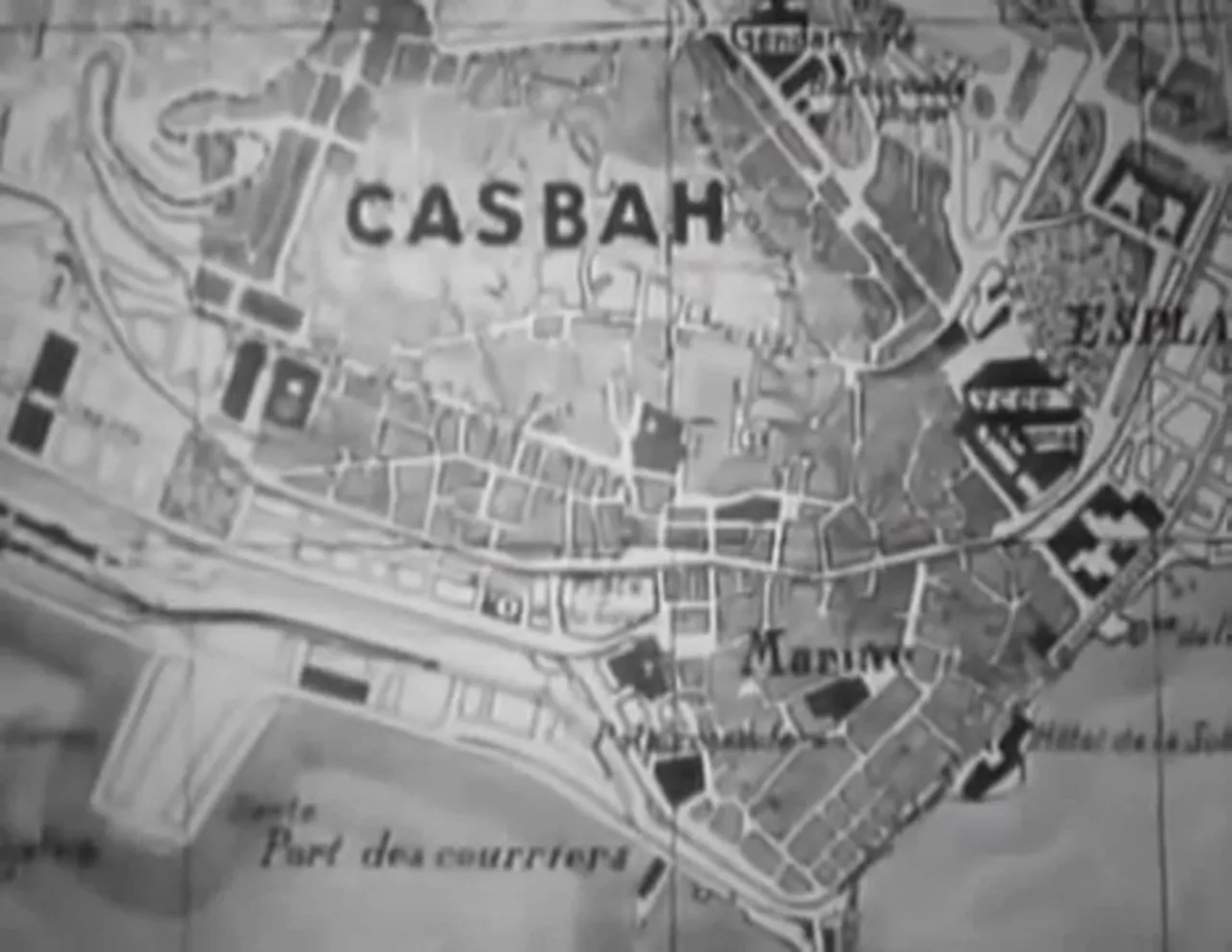
The Casbah is presented as both refuge and trap. It shelters Pepe le Moko—a notorious jewel thief escaped from France—and makes him invulnerable within its walls. Yet that very shelter is also the architectural form of his imprisonment. The village-like density allows residents to move across rooftops and terraces without descending into the streets, while simultaneously enclosing Pepe with invisible boundaries: “You can’t arrest a king in his own palace,” the film quite literally asserts, making the Casbah the nexus of the film’s central paradox.
This depiction of urban claustrophobia and territorial sovereignty is one of the reasons the film has resonance with noir aesthetics. The Casbah’s maze-like alleys, the secret courtyards, and the sense of fatal inevitability are structural ingredients that later film noir movies would deploy in stylized urban settings to explore moral ambiguity and doomed protagonists.
Casbah as cultural collage
The Casbah in Algiers becomes a melting pot of identities—Berbers, Chinese, gypsies, Slavs, Maltese, Africans, Spaniards, Sicilians—presented as a teeming microcosm. The film’s descriptive narration in the opening sequences emphasizes how these diverse lives are folded into the Casbah’s confined spaces. That multiplicity is not mere background color; it is a network of allegiances, threats, and loyalties that sustain Pepe and simultaneously limit his mobility. The setting, therefore, frames every moral and emotional choice the protagonist makes.
Plot Overview and Pivotal Scenes
Algiers follows the arc of a tragic romance set against an escalating police pursuit. Pepe le Moko, celebrated for his cunning, dwells in the Casbah after fleeing France with a fortune in jewels. Commissioner Janvier and Chief Inspector Louvain are determined to capture him. Yet capture within the Casbah proves impossible: its geography, the loyalty of its denizens, and Pepe’s own prestige make him seemingly untouchable—until he becomes vulnerable through yearning and attachment.
The plot pivots on a series of maneuvers: raids that fail to net Pepe, jealous informers within Pepe’s circle, and the arrival of Gaby—a French tourist whose beauty and cosmopolitan presence disturb the equilibrium of Pepe’s world. The film’s emotional logic is a mixture of fatalism and passion: Pepe cannot leave the Casbah and yet, when love offers an exit, he chooses to gamble everything on it.
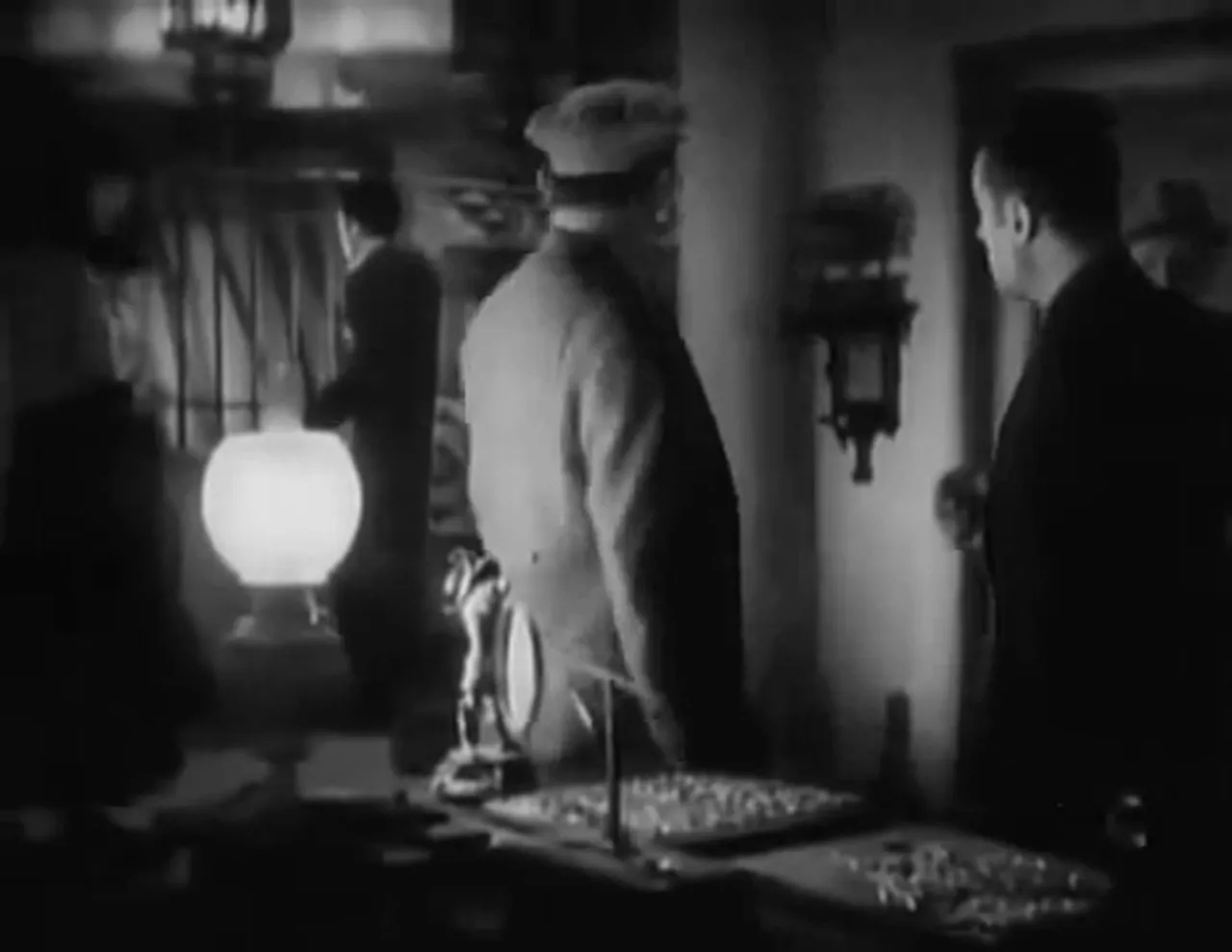
A pivotal set-piece is the police incursion into the Casbah, dramatized as a close, claustrophobic sequence where the detectives close in and Pepe narrowly escapes—wounded but free. The attempt to isolate and capture Pepe by making his associate Piero a lure demonstrates how the authorities exploit personal ties. It is also an example of how the film uses procedural mechanics to heighten moral consequence.
Climax and tragic denouement
When Pepe finally leaves the Casbah—motivated by hope for escape with Gaby—the film crystallizes into a classical tragedy. A web of betrayal and police strategy culminates on the docks where Pepe seeks Gaby, only to be confronted by Slimane and his men. In the end, it is not exclusively a shoot-out of a criminal and the law but a moment weighted by remorse: Inspector Slimane cradles Pepe, apologizes, and hears the dying man declare, “And so I have, my friend.”
Character Studies: Pepe, Gaby, Slimane, and the Supporting Ensemble
The characters in Algiers are archetypes and yet rendered with distinct, human contours. The critic treats them as study subjects whose arcs reveal the film’s thematic preoccupations.
Pepe le Moko (Charles Boyer)
Pepe is both charismatic refuge and imprisoned soul. His charm, resourcefulness, and affection for the Casbah’s strange order win the audience’s sympathy while his fatalistic longing for the world beyond defines his tragic trajectory. Boyer was nominated for an Academy Award for Best Actor for his performance, and the critic notes that his portrayal drew comparisons to Jean Gabin’s original Pépé in the French film. Boyer, according to contemporary remarks, described the process of adapting Gabin’s performance as difficult; yet Cromwell argued Boyer’s interpretation rendered Pepe a distinct figure. The film positions Pepe as the romantic criminal—a trope that later film noir movies would also explore, but Algiers presents the figure with a distinctly European romantic fatalism.
The Casbah is his territory... He's safe as long as he stays there.
The line above from the film encapsulates the paradox that defines Pepe: safety and captivity are the same thing. When the film forces Pepe to choose between safety and love, the choice is both noble and self-destructive.
Gaby (Hedy Lamarr)
Hedy Lamarr’s Gaby is the French tourist who awakens Pepe’s desire for an escape. Lamarr’s role became historically important: the part is her Hollywood debut, and, as Wikipedia notes, the filmmakers of Casablanca later wrote with Lamarr in mind for their female lead. The critic observes that Gaby functions narratively as both a romantic object and as an emblem of the outside world—a Paris that symbolizes possibility and the lost idea of freedom. Her decision to meet Pepe again and again gives narrative impetus, but Gaby also represents the limitations of contact across cultural divides—she is watched, hindered, and ultimately unable to provide the unambiguous salvation Pepe desires.
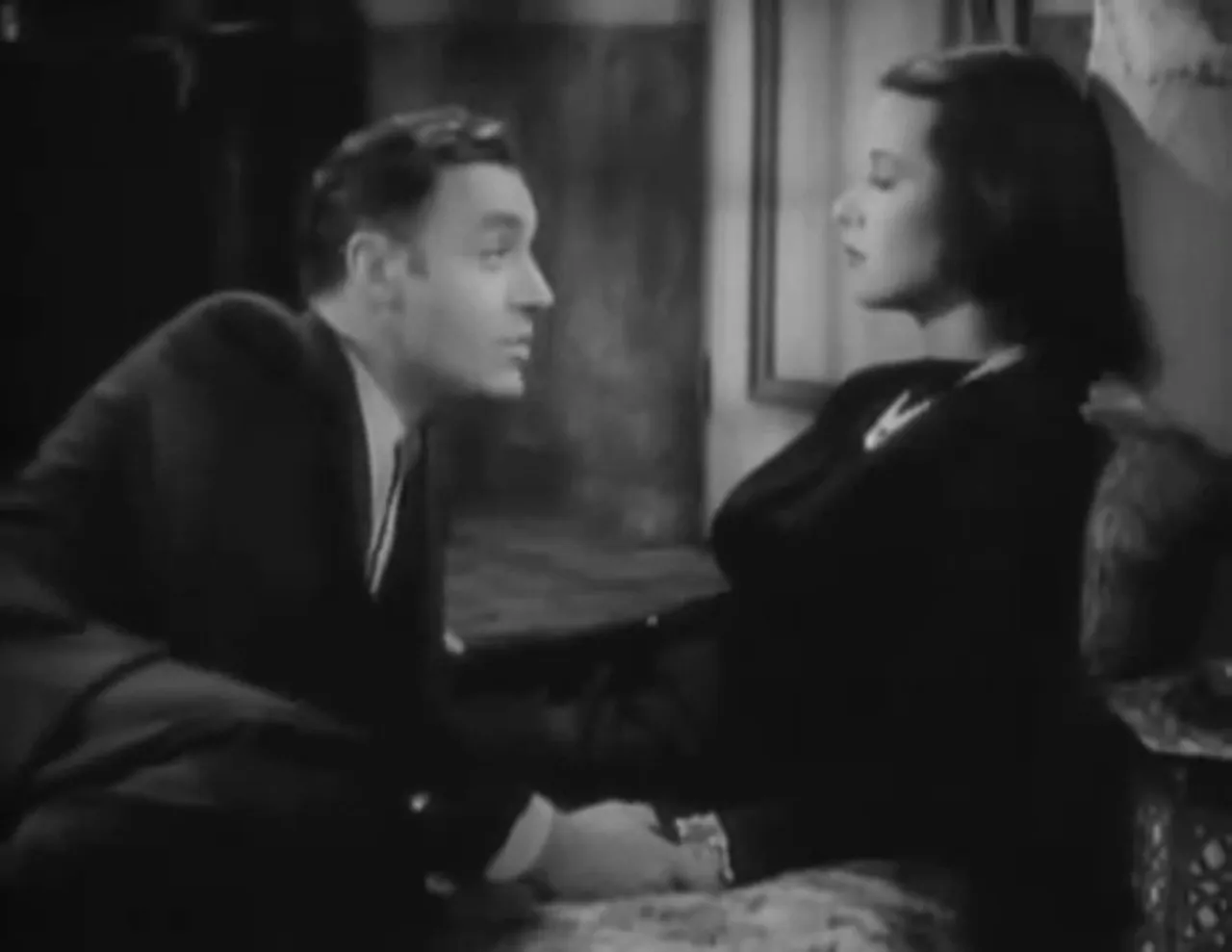
Inspector Slimane (Joseph Calleia)
Inspector Slimane is a critical moral center in Algiers. He admires Pepe but is a lawman. Joseph Calleia won the National Board of Review Award in 1938 for his performance, and the film also earned him honor in contemporary assessments. Slimane’s complex relationship with Pepe—admiring, sympathetic, yet determined to enforce the law—culminates in the emotional resolution on the docks where he cradles the dying thief. This moment of moral ambiguity and humane sorrow resonates strongly with later noir sensibilities, where the line between law and empathy is frequently porous.
Supporting characters and the human ecosystem
The supporting cast—Ines (Sigrid Gurie), Regis (Gene Lockhart), Grandpere (Alan Hale), and others—populate the Casbah as a social ecosystem. Each character contributes to Pepe’s world: some serve as protectors, others as betrayers. Regis’s jealousy, for example, becomes an engine of conflict that the police exploit. The film uses interpersonal fissures to dramatize how loyalty, envy, and survival coexist in a crowded community.
Production, Casting Choices, and Censorship
Production of Algiers was notable for its effort to Americanize a French classic while preserving essential elements. Walter Wanger acquired the rights to Pépé le Moko and used music and background sequences from the French film. To heighten authenticity, James Wong Howe blended location footage of Algiers with studio work, giving the film a textured sense of place.
Casting and directorial dynamics were controversial. Lamarr’s Hollywood debut was historic, but director John Cromwell later expressed doubts about her acting ability; Charles Boyer reportedly felt the pressure of the adaptation, comparing it to Jean Gabin’s iconic performance. The production also had to navigate the Production Code Administration’s objections. The PCA balked at portrayals of kept women and references to prostitution, and it demanded changes concerning Pepe’s fate. Instead of depicting an explicit suicide, the film’s script ended with Pepe being shot by police who believed he tried to escape—complying with PCA constraints while preserving the tragic outcome.
Wanger’s strategic business choices—purchasing every print of Pepe le Moko to limit competition—demonstrate a Hollywood industrial mindset focused on controlling cultural capital. The critic notes this maneuver as an early example of studio practice to shape audience access and interpretive frameworks.
Style, Themes, and a Case for Noir-Adjacent Influence
Algiers came out in 1938 as a crime drama; yet the critic argues that it contains stylistic and thematic elements that would feed into the film noir movie tradition of the 1940s and 1950s. The terms of that argument are carefully framed: Wikipedia records Algiers as a crime drama, not classic noir. Nonetheless, the film shares motifs with noir — urban claustrophobia, moral ambiguity, doomed romance, and a fatalistic protagonist who is trapped by circumstance and desire.
Pepe’s psychological smothering in the Casbah is the film’s central symbolic device. The Casbah represents an inescapable geography: a social labyrinth that nurtures Pepe but also encloses him. That architecture of confinement is an antecedent to later noir’s obsession with urban environments that reflect inner states. Similarly, the film’s use of chiaroscuro photography in some sequences by James Wong Howe and its emphatic close-ups on faces and jewelry create a visual intensity that complements the heavier emotional beats; those cinematographic choices would become hallmark techniques in later film noir movies.
Crucially, Algiers also includes moral ambivalence. Inspector Slimane’s admiration for Pepe and the bittersweet collapse of law versus sympathy complicate the idea of clear moral binaries. The film ends with a moment of penitential humanism: a policeman apologizes to the dying thief and hears him speak to the idea of escape in a metaphysical sense. Such complexity resonates with noir’s tendency to dismantle heroic certainties and to emphasize personal tragedy within criminal milieus.
For a critic interested in film noir movie genealogy, Algiers can be read as a bridge. It is not a canonical noir, but it supplies several preconditions for the genre: urban fatalism; a love that invites transgression; moral shades within institutional actors; and technically ambitious cinematography that invests in mood as much as plot.
Reception, Awards, and Legacy
Algiers received a mixture of commercial success and critical esteem. Contemporary reviews lauded the film’s pacing and performances. The New York Times critic Frank S. Nugent called it “one of the best pictures of the season,” praising the film’s control and tempo. The film earned a modest profit, and its critical recognition included Academy Award nominations for Charles Boyer (Best Actor), Gene Lockhart (Best Supporting Actor), Alexander Toluboff (Best Art Direction), and James Wong Howe (Best Cinematography).
Beyond immediate accolades, the film’s longer legacy is notable. It introduced American audiences to Hedy Lamarr, influencing the casting deliberations for Casablanca and contributing to American awareness of the Casbah as a romantic, exotic locale. Charles Boyer’s portrayal also inspired popular culture references: notably, the Warner Bros. animated character Pepé Le Pew caricatured the romanticized French thief’s persona.
In later legal history, the film entered the public domain in 1966 when its copyright registration was not renewed by claimants. This fact—apart from artistic considerations—meant the film became widely redistributed without rights barriers, allowing future generations easier access to its imagery and themes.
Close Readings of Key Scenes
The critic now offers close readings of several pivotal scenes, using precise moments from the filmed presentation and quoting lines that illuminate the film’s themes and cinematic artistry.
1. Opening meditation on the Casbah (Approx. 03:34)
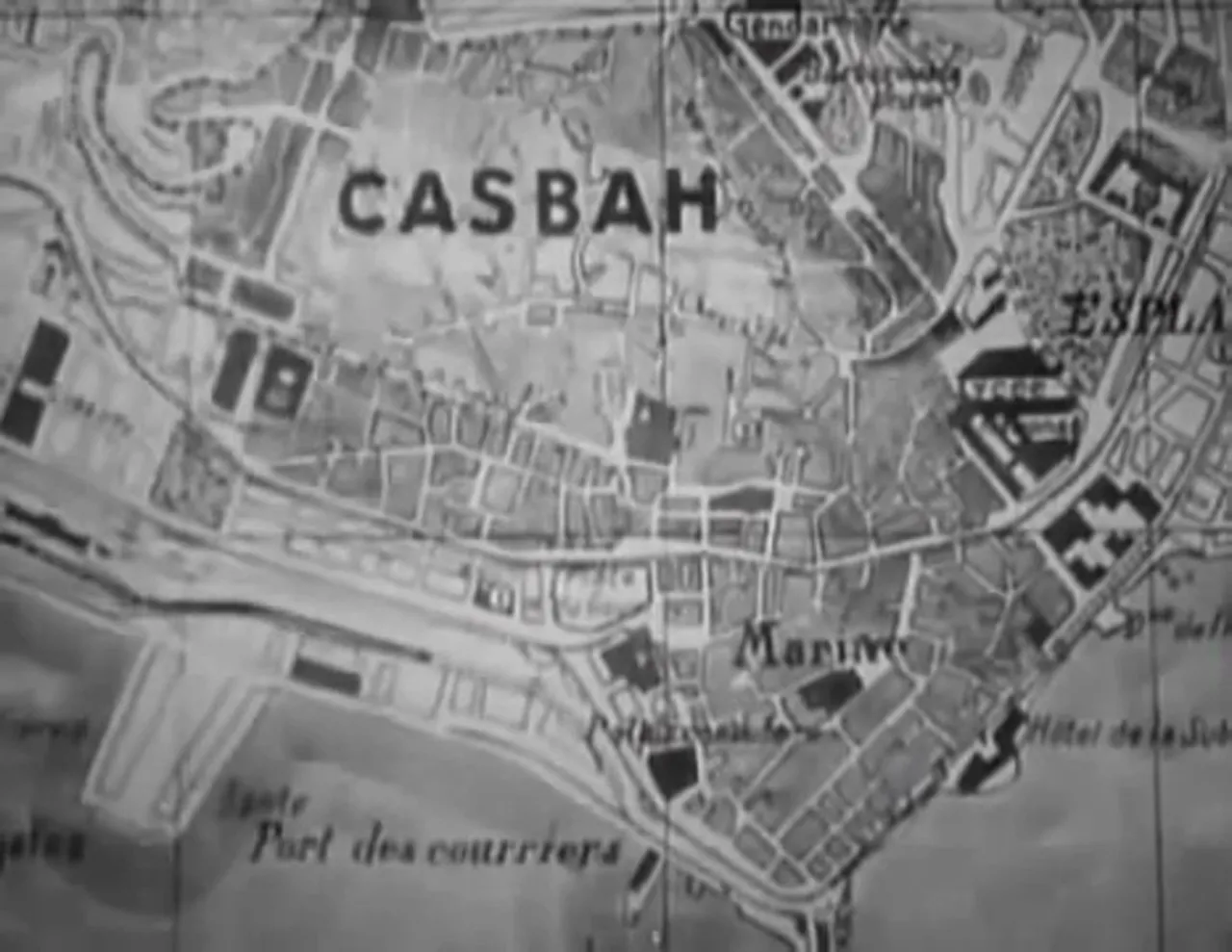
The film begins with a lyrical yet ominous voiceover that announces the Casbah as a place apart. The critic notes how the narration—“The native quarter known as the Casbah...a melting pot for all the sins of the earth”—sets an ambivalent tone. It is a place of colorful life and dangerous secrecy. Cinematically, the sequence establishes spatial logic: terraces, roofs, and connected courtyards allow movement and concealment, which are strategic assets for Pepe but which, crucially, lock him into a closed world.
2. The failed raid and narrow escape (Approx. 14:27–15:34)
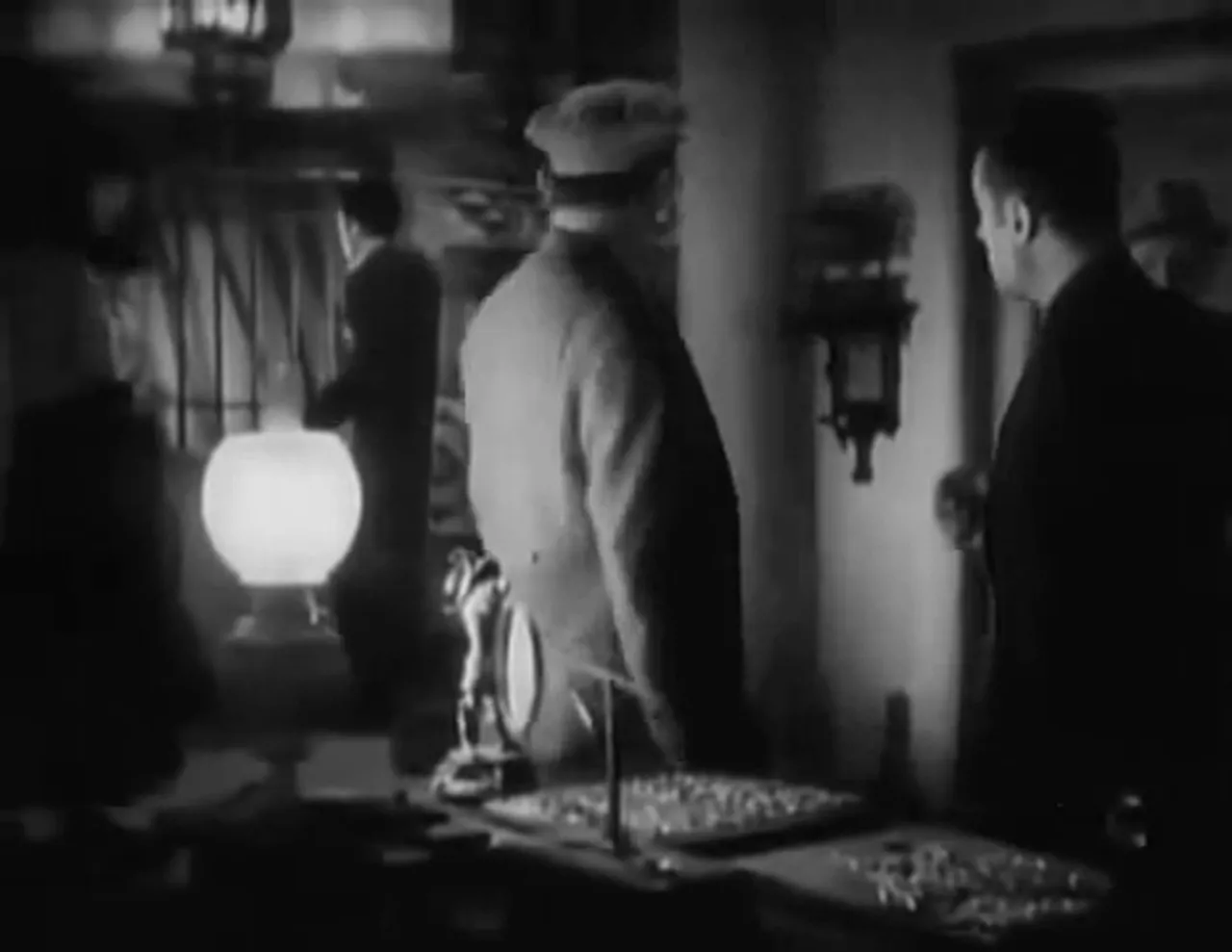
One of the film’s most kinetic sequences is the raid that almost captures Pepe. The police enter, the Casbah resists, and Pepe hides in a basement until he’s able to escape wounded. This scene demonstrates the film’s dual emphasis: procedural detail (the raid mechanics) and personal risk (Pepe’s narrow avoidance of capture). The wounded escape foreshadows the film’s tragic calculus—Pepe’s physical injuries mirror the growing vulnerability of his emotional choices.
3. Gaby’s arrival and the romance with Parisic symbolism (Approx. 1:09:46)
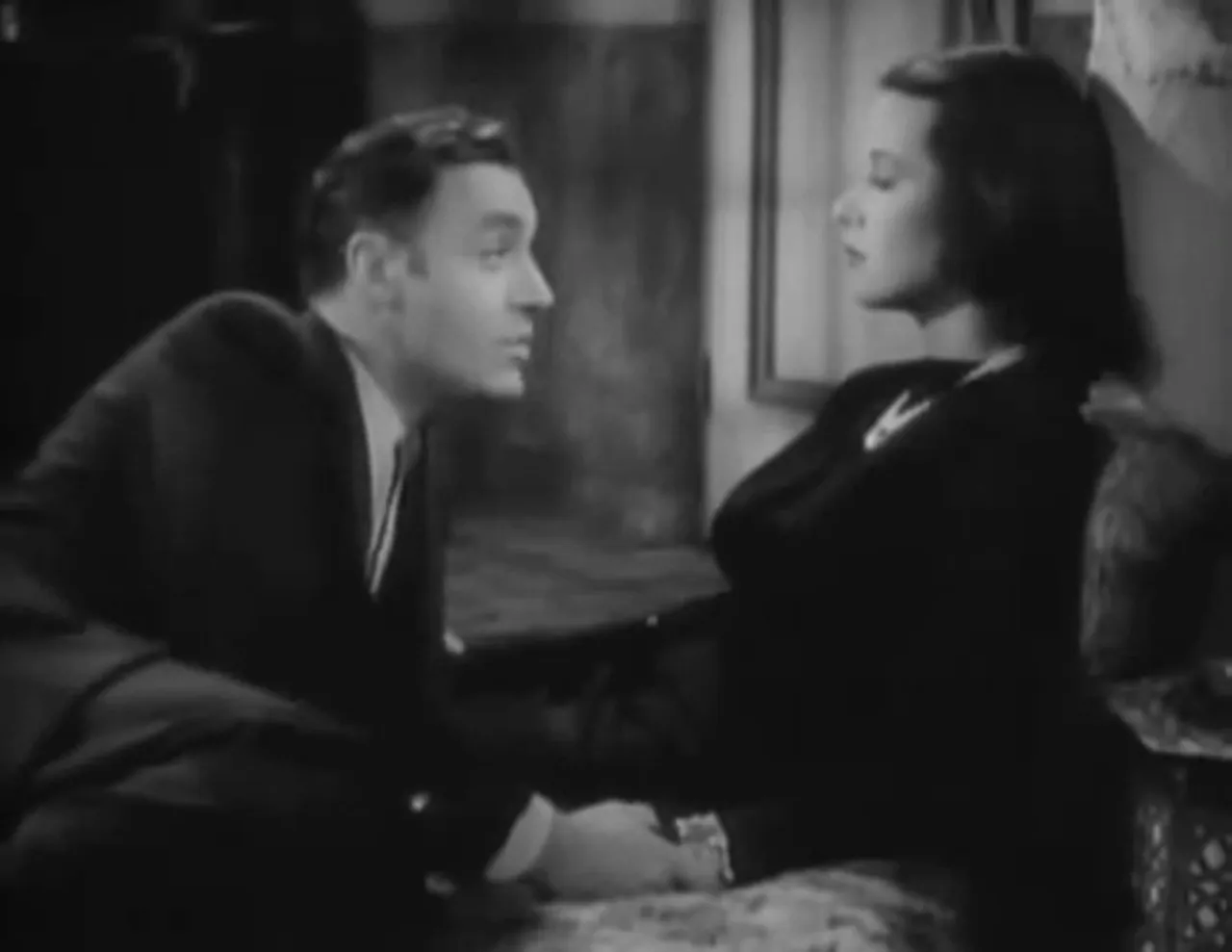
Gaby’s scenes with Pepe are charged with nostalgia and fantasy. In one compelling exchange Pepe tells Gaby what she means to him: she is Paris—the possibility of an outside life. He even likens his heart to the subway: rhythmic, urgent, signifying movement. The critic highlights how the film uses urban imagery (the subway, the boulevards) as shorthand for modernity and freedom, both of which are out of reach for a man anchored to the Casbah. The romance is tender but doomed: cinematic sentimentality collides with political and spatial constraints.
4. Betrayal, the lure, and Pierrot’s arrest (Approx. 25:16–26:06)
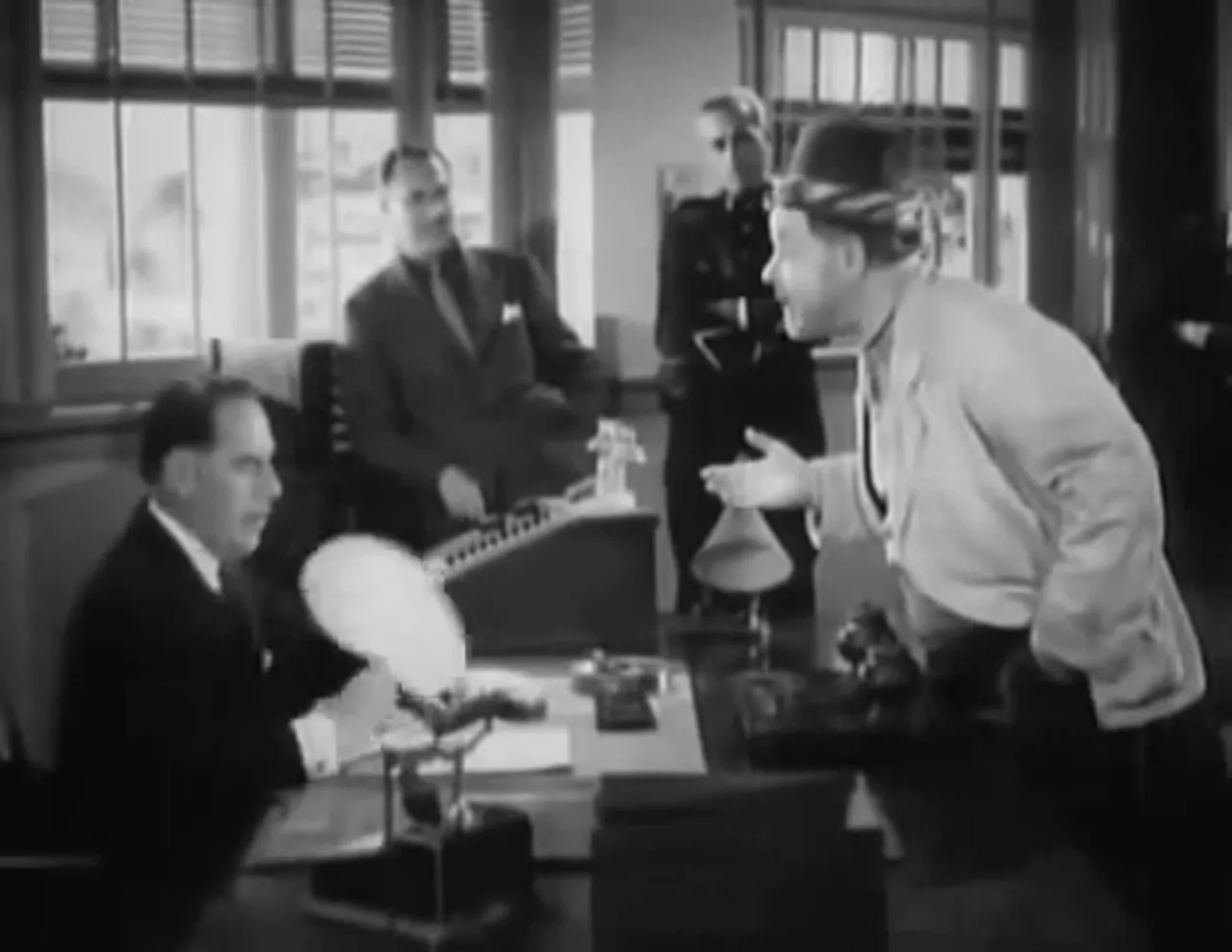
The moral complexity of Algiers peaks when internal betrayal leads to the capture of associates. Regis’s jealousy and the police’s cunning—using a falsified letter from Pierrot’s mother—illustrate how personal grievances and institutional power conspire to fracture the protective social fabric of the Casbah. The critic notes that these sequences are not only plot machinations; they expose how intimate relationships can be weaponized, ultimately draining the protagonist’s options.
5. The final boarding and the docks (Approx. 1:05:08 – 1:05:42)
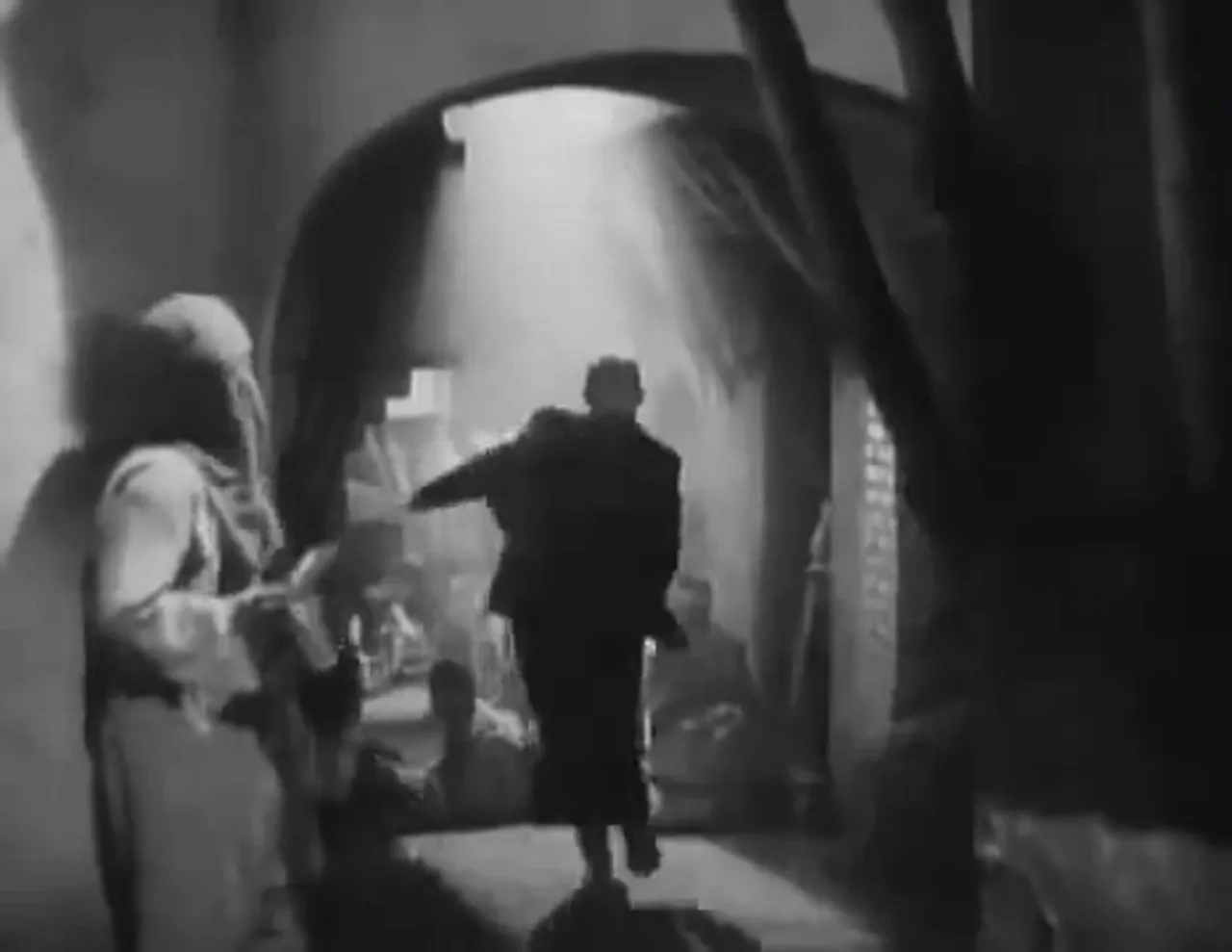
The final sequence on the docks is a study in tragic timing. Pepe believes he can reach Gaby and escape; instead, he confronts authority. The dying exchange with Slimane—where the policeman apologizes and Pepe accepts a metaphysical escape—resonates as the film’s emotional apex. It is in this final, quiet moment that Algiers achieves its most profound humanist note: law enforces order but cannot erase empathy; and escape can be spiritual even when it is denied as movement.
Algiers and the Film Noir Movie Conversation
The critic now turns explicitly to the relationship between Algiers and the corpus of films commonly labeled film noir movie. While Algiers is historically categorized as a crime drama, the critic argues that the film participates in an aesthetic and thematic conversation that would crystallize as noir in the 1940s and 1950s. Consider the following intersections:
- Urban confinement and architectural entrapment: The Casbah’s labyrinth prefigures noir’s urban canyons and alleys that reflect inner turmoil.
- Fatalism and doomed protagonists: Pepe’s tragic arc resembles noir heroes who are undone by desire and circumstance.
- Moral ambiguity: The sympathetic policeman Slimane complicates the opposition of law and crime in a way noir often does.
- Stylistic gravitas: James Wong Howe’s cinematography invests the film with a visual intensity that anticipates noir lighting and framing.
Thus, while Algiers is not a canonical film noir movie per the historical category, its DNA—tone, architecture, fatalism, and romantic tragedy—helped seed the cultural sensibility that allowed the noir mode to flourish.
For readers searching specifically for a film noir movie experience, Algiers offers many of the emotional and aesthetic satisfactions associated with noir: intimacy with the underside of urban life, a protagonist trapped by his own longings, and a final moral reckoning that is both tragic and humane.
Reception, Awards, and Cultural Afterlife
Algiers’ critical reception was warm at the time of release. The New York Times praised its pacing and the controlled intensity of its storytelling. The film earned several Academy Award nominations, including Best Actor for Charles Boyer and Best Supporting Actor for Gene Lockhart. Joseph Calleia’s performance as Slimane was recognized by the National Board of Review.
In the decades after its release, Algiers influenced other works. Notably, it is cited as a source of inspiration for the screenplay and thematic sensibility of Casablanca; the film’s romantic, world-weary tone and the presence of Hedy Lamarr in the Hollywood imagination played a role in Casablanca’s development. Charles Boyer’s depiction also provided comic fodder in the form of Pepé Le Pew, an animated caricature that parodied the romantic French thief.
Algiers’ entry into the public domain in 1966 widened its reach to later audiences and scholars. For the classic cinema critic, the film thus functions as both artifact and progenitor: a film that captures a historical moment and that radiates influence into subsequent cinematic genres and cultural forms, including elements that would feed into film noir movie aesthetics.
Practical Viewing Notes and Recommendations
For contemporary viewers and cinephiles approaching Algiers as a document of classic Hollywood transposition, the critic offers practical notes:
- Appreciate it as a historical adaptation: Compare Algiers to Pépé le Moko if possible. Observe how the American remake reshapes tone and moral emphasis for its audience.
- Watch the Casbah sequences attentively: The film’s sense of place—rendered through Howe’s cinematography and location footage—carries much of the film’s emotional freight.
- Note the performances: Charles Boyer’s nuanced portrayal of an imprisoned romantic thief is the film’s central magnet, while Joseph Calleia’s Slimane provides its conscience.
- Consider the film’s cultural context: the Production Code’s constraints and the producer’s business choices are integral to understanding narrative choices and the film’s final form.
Finally, the critic asserts that viewers interested in tracing the lineage of the film noir movie sensibility will find Algiers a rewarding text: it may not be noir by label, but it is noir in spirit in several fundamental ways.
Conclusion: Algiers in a Film Historian’s Frame
Algiers stands as a hybrid: a crime drama molded by Hollywood industrial priorities, a romantic tragedy with European temperament, and a cultural artifact that reverberated across subsequent films and popular culture. The film’s careful staging of the Casbah, the moral delicacy of its characters, and its visual ambition render it essential viewing for students of classical cinema and for anyone curious about the roots of the film noir movie sensibility.
From its casting choices and production maneuvers to the poignant final tableau where Pepe accepts a metaphysical escape, Algiers displays an economy and a depth that reward close critical attention. It also occupies an important place in film history for launching Hedy Lamarr’s Hollywood career, inspiring other filmmakers, and leaving an imprint on the larger cinematic imagination. As a critic attentive to stylistic genealogies, one can list Algiers among those pre-noir texts that shaped the language of fatalism, urban entrapment, and romantic doom that would come to prominence in the film noir movie era.
For the modern reader and film enthusiast, Algiers warrants repeated viewings. Each return reveals new tonal inflections and new nuances in performance, further confirming the film’s standing as a classic production with a complex legacy.
Final viewing suggestion
Consider pairing Algiers with its French source Pépé le Moko and with early noir films of the 1940s to study how urbanism, fatalism, and romantic tragedy evolved on screen. For anyone cataloging the influences that culminated in the film noir movie movement, Algiers should be included as a meaningful antecedent and as a singularly atmospheric work of late 1930s Hollywood.
Reviewer’s note: This critique has relied on the film’s recorded presentation and its documented production and reception history, providing a critical reading that situates Algiers both in its own time and within the broader arc that connects it to film noir movie aesthetics.
